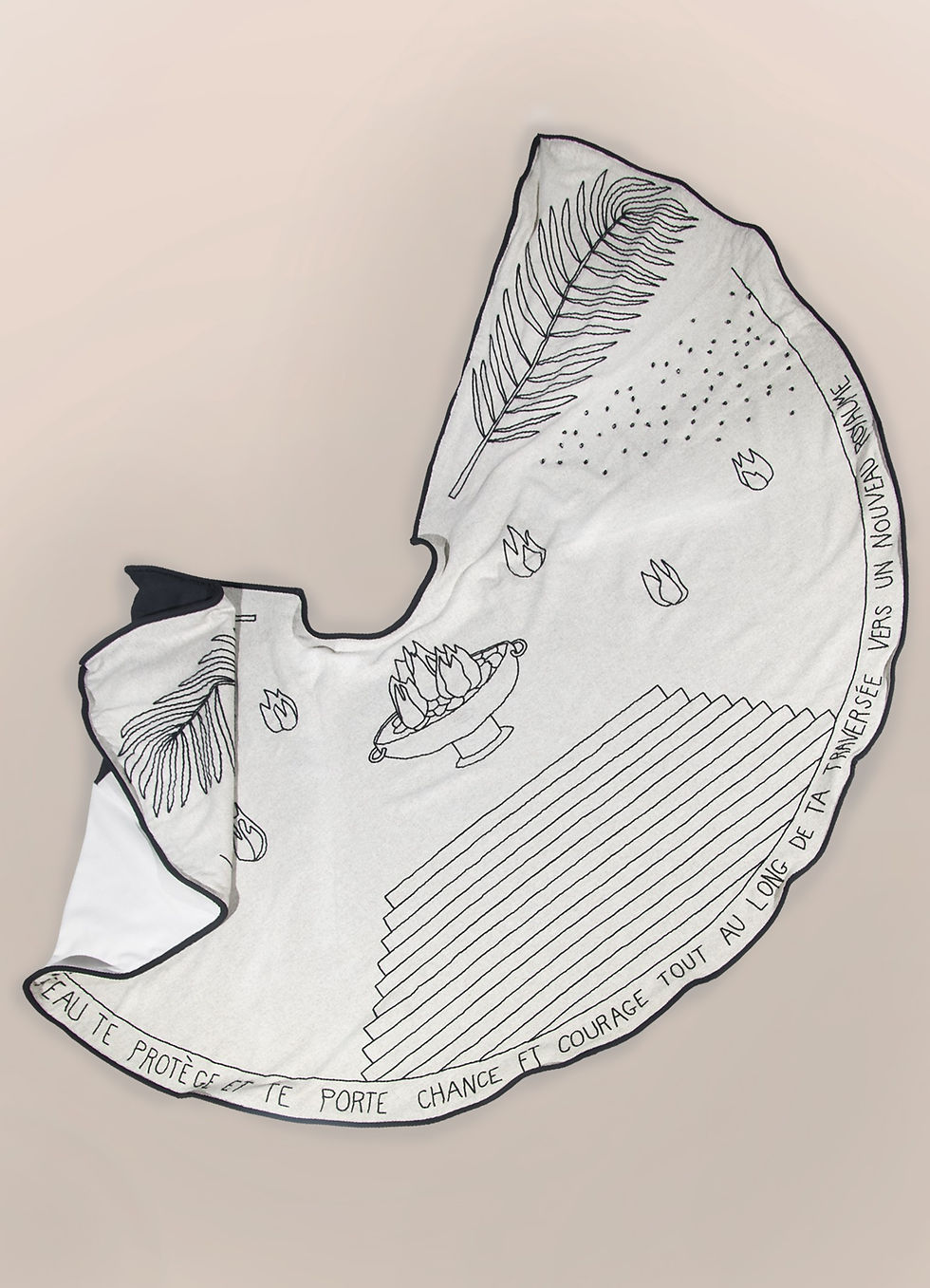You know the place. Where the conscious and the subconscious collide, where the dead never left, where reality is a game.The precious (or sometimes awful) seconds that suspend the barrier between worlds. This mysterious place is where Jenna Kaës found herself a few weeks ago: “I remember I saw a strange face coming at me from the wall… and although this is going to sound super weird, I knew then that that was who I really am. That was my inner self."

Jenna’s ability to understand the subconscious, as well as her knowledge of the realm of dreams is inherent in her work. The objects she creates — or “tools” as she prefers to call them — are the materialisation of the victory of symbolism over pragmatism: “It’s about understanding what happens inside of us, inside our minds, and projecting it on the real world.” she explains. This idea is portrayed on her series of “domestic monuments” — items dedicated to monumental feelings.
One in particular, Werther, she speaks about with special enthusiasm: “It represents lost love,” she says. Werther is a small mountain made of black granite that stands on seashells. On the top there’s a wooden pyramid covered in little crystals. “There you can put something that belonged to the person you’ve lost and you’ll see it slowly crystallising with salt.”

Werther came into existence after Jenna finished reading On Love by Stendhal. In the book, a princess mourns the loss of her dead lover who she can’t stop thinking about. The writer represented their love by an old branch found in a salt mine. The branch had been there for so long, it had been crystallised. “The root symbolises the dead lover, and the salt that turns the wood into a precious gem is the princess’s undying love for him.”
Love after death, the crystallisation of a soul… these are all very romantic concepts, and Jenna can’t help a laugh when I point this out to her. “It’s always stories like that that lead me to create new objects,” she admits.
In fact, something similar happened during the creation of the Visual Dream Machine, a project Jenna made for magazine Frame 115. The machine allows the person who uses it to direct their dreams. “When I was working on it I was obsessed with a story about a man who had fallen in love with an opera singer. After her performance he tried to find her, but he never saw her again so he decided he’d try to find her in his dreams.”
The man, remembering the lilies that covered the stage where she stood on the night he first — and last — saw her, smashed flower petals and left them close to his bed. He fell asleep inhaling the smell of the flowers… and he finally dreamt of her that night.

The sense of smell is also what powers Jenna’s Visual Dream Machine. Using a gentle infrared light, the machine can heat up suggestive objects releasing their objects’ scent and generating an image in the subconscious. Jenna pauses to consider her options when I ask her what she would put inside the VDM tonight. “I’d probably put something from the forest close to my house, like a pine tree branch, to create the scenario. If I could find them, I would put some of my great grandfather’s cigars in it! I never met him, but he wrote poetry and just looked really cool.”
In the same way the princess’ beloved from Stendhal’s book had to die in order to become a gem, and the opera singer disappeared before she started visiting the infatuated man in his sleep, Jenna had to understand loss before she could comprehend creation. In fact, before she was fascinated with dreams, she had another passion that stays with her today: death. “I think everything started when I decided to work on funeral objects,” she says, before adding, “Or… maybe after the first time I broke up with someone. I was feeling so lost and sad, until I realised that the heartbreak had allowed me to understand myself better.”

One has to experience loss in order to truly comprehend that which has been lost. When someone dies, when something ends, when we wake up from a particularly good dream and struggle to remember the details.
When I finally get to ask her what she thinks about Witchcraft, her answer comes fast: “A Witch is someone who is connecting the world of the obscure and things that we cannot understand and reach to the real world. It’s someone who is able to connect two worlds.” So, like someone able to dream with a forest only by putting some branches close to their bed? She smiles. “Yes,” she says, “someone like that.”
Article written for Sabat Magazine
Comments